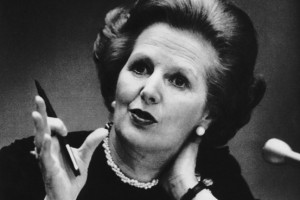A movie producer once shared with me a maxim for making historical films: Faced with choosing between “drama” and “historical accuracy,” compromise on the history and go with drama.
That is certainly what the producers of “The Iron Lady” have done. The result is a masterly performance by Meryl Streep as former British Prime Minister Margaret Thatcher. But the depiction of Mrs. Thatcher in the movie misses much of the larger story. …

After World War II, Britain created the cradle-to-grave welfare state. A clause in the constitution of the Labour Party which came to power in 1945 called for government to own the “means of production.” That ended up ranging from coal mines and the steel industry to appliance stores, hotels and even a travel agency. …
One telling moment that “The Iron Lady” misses is when a Conservative staffer called for a middle way between left and right and the prime minister shut him down mid-comment. Slapping a copy of Friedrich Hayek’s “The Constitution of Liberty” on the table, she declared: “This is what we believe.”
Years later, when I interviewed her in London, Mrs. Thatcher was no less firm. “It started with ideas, with beliefs,” she said. “You must start with beliefs. Yes, always with beliefs.” …
Yet her true impact has to be measured by what came after, and there the effect is clear. When Tony Blair and Gordon Brown took the leadership of the Labour Party, they set out to modernize it. They forced the repeal of the party’s constitutional clause IV with its commitment to state ownership of the commanding heights of the economy. They did not try to reverse the fundamentals of Thatcherite economics. …
The lesson that governments cannot permanently live beyond their means had been learned. …That is the real story of the Iron Lady. And that is the story in Europe—and the U.S.—today.
Read complete article.
